These instructions are for installing the Lightweight X11 Desktop Environment (LXDE) core in Ubuntu 12.04 running the Unity Desktop.
Installation instructions may be the same or similar for other versions of Ubuntu or for other Linux distros, but no guarantee is made.
The core files give you the basic LXDE desktop environment.
There is also the LXDE Desktop environment. In addition to installing the core LXDE desktop, it also installs some applications. Some of those applications perform the same or similar functions to applications already installed with Ubuntu 12.04. Installation instructions can be found here.
For a complete “Ubuntu” experience using the LXDE desktop consider installing the Lubuntu Desktop. This is the core Ubuntu system configured to use LXDE as its desktop. On the negative side, it also installs many applications that perform the same or similar functions as applications already installed with Ubuntu 12.04. Installation instructions can be found here.
An article listing alternative desktops for Ubuntu 12.04 can be found here.
If you are changing desktops because you are totally lost / confused by Unity, I suggest reading this tutorial and giving Unity a chance.
Of course, if you really hate Unity, then LXDE is an alternative desktop.
LXDE Core will install 19.7MB of files and data to your hard disk.
Some images may be clicked for full sized versions.
What it Looks Like
The basic, straight-out-of-the-box, look of the desktop is:
From the Command Line
If you are comfortable with Linux and know how to use the command line and apt-get then the command is:
sudo apt-get install lxde-coreDetailed instructions for accessing a command line can be found here.
Afterwards, restart your system. It should be enough to just log out and the log back in with the new desktop, but it doesn’t hurt to restart.
From the Ubuntu Software Center
Some images may be clicked for full sized versions.
1) Launch the Ubuntu Software Center by clicking the icon on the Launcher:
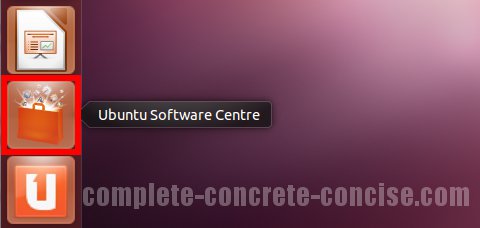
2) Enter lxde-core into the search field. This will bring up related entries.
3) Click on the entry Meta-package for the Lightweight X11 Desktop Environment Core – this will highlight it in orange:
4) Click on Install:
5) Enter your password and click Authenticate:
6) After installation is finished, click on the System icon in the upper right corner of the desktop and select Shut Down… from the drop down menu:
Note: it may be enough to just log out and log back in using the new desktop, but it doesn’t hurt to restart either.
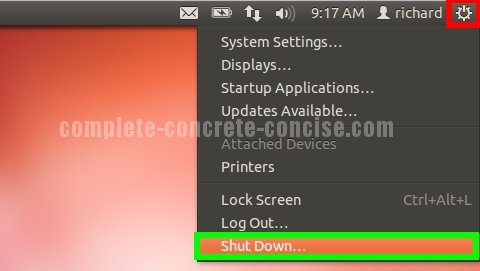
7) Click on Restart:

Selecting the Desktop
After the system has restarted, it is necessary to select the new desktop from the login screen.
It is only necessary to select the desktop the first time after installation. Ubuntu will remember your your desktop for future logins.
You can even install multiple desktops and switch between them.
8) Click the icon in the top right of the Login box:
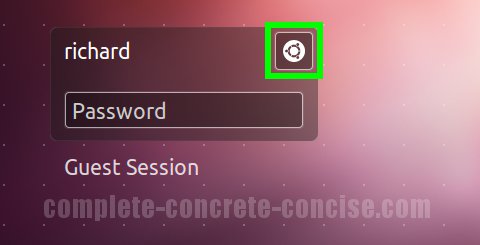
9) Select LXDE:
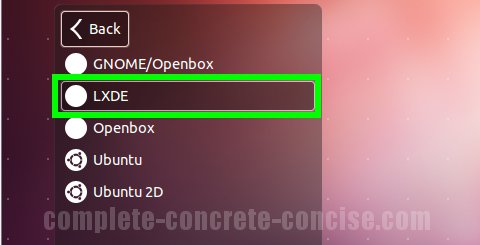
LXDE is built on top of Openbox and GNOME/Openbox, which is why their entries also appear in the desktop menu. It is best to ignore them since they log into a completely blank desktop.
10) Login
Notice the icon in the upper right hand corner has changed to an open circle. Some, not all, desktop environments will place an icon there.
If an icon is present, it provides a quick way to see which desktop environment you are logging into.
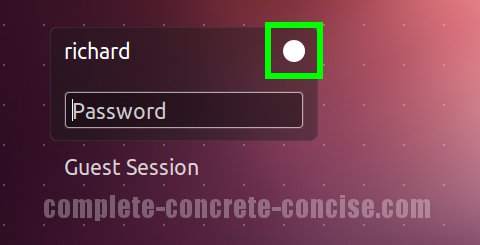



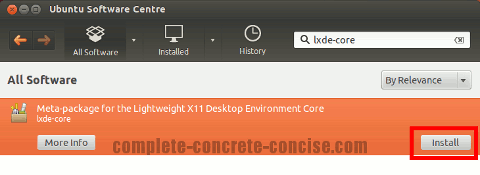
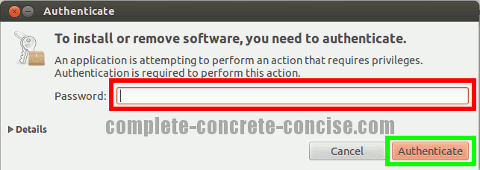
WOW! You are going straight to HEAVEN… you are a savior. I cannot stand UNITY, and THIS made me a believer again what UBUNTU SHOULD BE.
Loving this LXDE, I’ll never look at Unity junk again THANKS TO YOU… great job.
T H A N K Y O U SO MUCH!!!!!!!!!!!!!
Thank you for your enthusiastic comment!
Unity takes some getting used to, but I’ve come to like it.
One thing the article misses on (I’ll address it later), is that you need to either (1) install
lxterminalor (2) change you shortcut keys to point to a different terminal (by default, LXDE maps the terminal shortcut to LXTerminal).Of course, this only matters if you use the desktop shortcut (Ctrl+Alt+T) to access a terminal. If you access it through the menu, then it isn’t a problem.